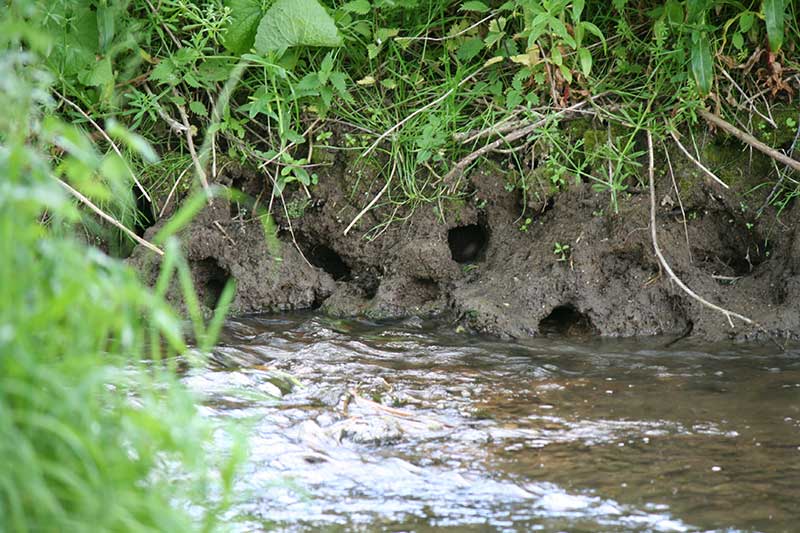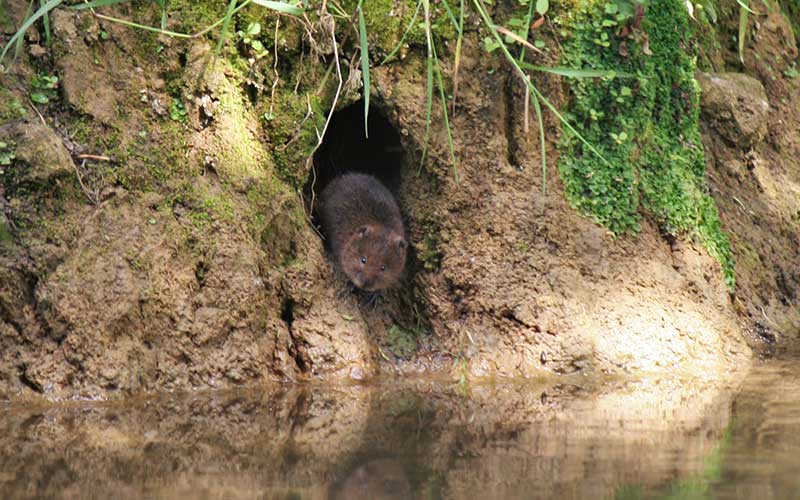Britain’s water voles are in trouble. The arrival of non-native American mink and loss of suitable habitat have led to them becoming one of our fastest declining mammals. The key to halting the decline and conserving this species is understanding where water voles currently are, where they are doing well, and crucially, where they have disappeared. With this knowledge, we can better identify threats and target conservation efforts to areas where they are most needed.
The survey
The main aim of PTES’ National Water Vole Monitoring Programme (NWVMP) is to revisit sites that were originally surveyed in the 1990s. It was the results of these surveys that revealed the extent of the decline; water voles were lost from nearly 90% of sites monitored within just seven years. In 2015 the NWVMP was set up to check what’s happened in the intervening years. Being an annual survey, it will also allow more detailed analysis of trends over time, once we have data covering a long enough time series to detect change. And, by expanding the programme to enable volunteers to submit data from sites they may already be monitoring for other projects, the NWVMP aims to bring together water vole data from different local schemes.

What’s involved?
After signing up to take part in the survey, you can select one of the original sites to monitor, or you can register a new site to the programme – ideal if you already survey a local site. Between 15th April and 15th June 2021, we ask surveyors across England, Scotland and Wales to visit their site(s) and walk a 500m transect along a waterway, recording signs and sightings of water voles. We provide detailed survey guidelines, together with information on what signs to look out for, but these include burrows, feeding signs and latrines. As well as building a picture of spatial and temporal patterns in water vole distributions, by telling us how many of these signs surveyors see per transect section, we can also get an idea of water vole abundance, really enhancing the value of these surveys. We also ask surveyors to look out for any signs or sightings of American mink and otter along their transect(s), as this adds to our understanding of the distribution of these two species and helps track the spread of American mink.
Since 2015, the number of sites surveyed has gradually increased so that over 400 sites have been monitored at least once. We’re really keen to see this number increase, and crucially for sites to be visited year-on-year to account for natural population fluctuations and changes in detectability, establishing a robust dataset for future analysis. And after a gap in our data collection last year, we’re particularly keen to find out how water voles are doing in 2021.

What happens to the data?
The records are added to our national database and are passed to the National Biodiversity Network (NBN) atlas, Local Environmental Records Centres and the Wildlife Trusts’ National Water Vole Database and Mapping Project (subject to any sensitivities or data sharing agreements). The data you collect can therefore be used to aid conservation efforts and inform Ecological Impact Assessments.
Visit www.ptes.org/watervoles to find out more and to take part in the survey.

Practical advice
One of the main threats to water voles is habitat degradation. Fragmentation, in particular, leaves isolated populations that are unable to disperse to other colonies and escape the threat of American mink. But by restoring bankside vegetation and connecting patches of existing habitat across the landscape, water voles can be successfully encouraged to return to our waterways.
The free PTES guide for landowners and the wider farming community, Helping Water Voles on Your Land, sets out how this can be achieved through a few simple changes in land management. You’ll find advice on ways to enhance waterside habitat including livestock management; buffer strips; sympathetic watercourse and ditch management; and restoring, recreating and managing wetland habitats. The guide describes how these measures benefit water voles, and other native wildlife. Control of non-native American mink is also covered, in addition to details about agri-environmental schemes. The guide is endorsed by the UK Water Vole Steering Group, which includes representatives of the following organisations: Environment Agency, Natural England, Natural Resources Wales, NatureScot, People’s Trust for Endangered Species, Royal Society for the Protection of Birds and The Wildlife Trusts.
To download a free copy of the guide, visit www.ptes.org/water-voles.
Written by Henrietta Pringle, Key Species Data & Monitoring Officer at PTES
